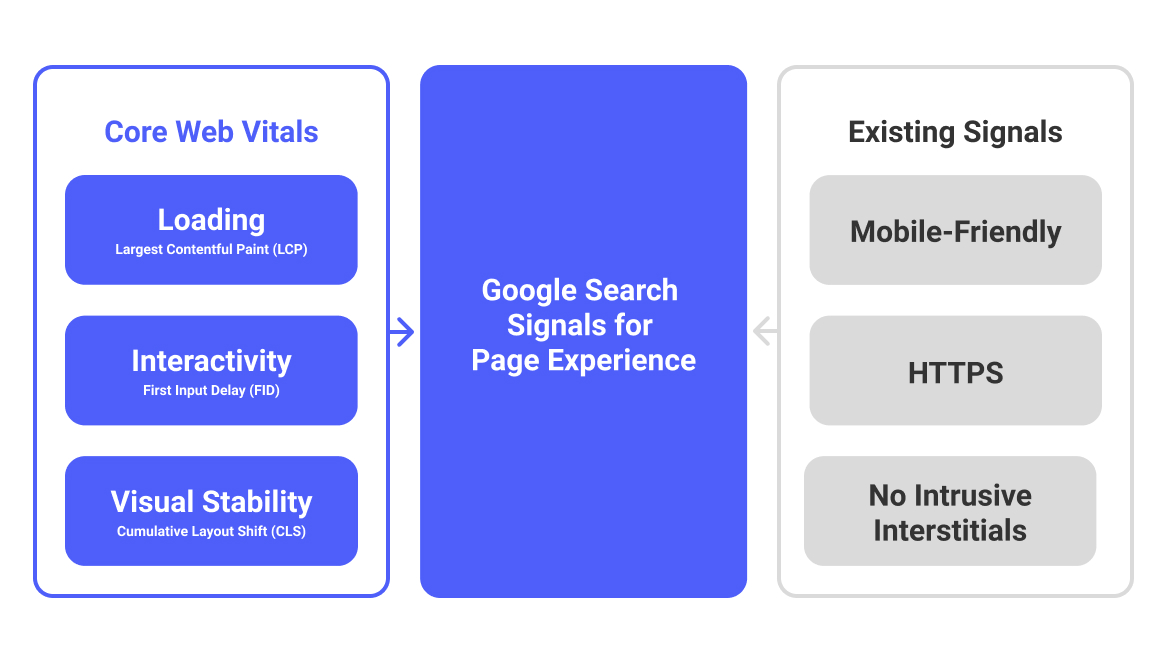MARKETING
35 Unique Ways to Increase Your Website Traffic

When it comes to web traffic, the more, the merrier.
Part of your job as a marketer is to come up with new and inventive ways to drive more eyes to your site. This has a couple of big benefits for any business, including ramping up brand awareness and sales as well as growing your email subscriber list.
The connection between web traffic and overall email marketing success is a big one, with the more visitors that you can bring to your site equaling more opportunities to sign them up for your emails and make stronger, more impactful connections.
We have lots of advice on how to capture contacts once they make it onto your site, but how do you get them there in the first place? Keep reading for 35 creative ways that you can increase website traffic, then get to work tracking visitor behavior so that you can put website forms in optimal spots.
How to Track Website Traffic
Before we get into the specifics of how to increase website traffic, let’s go over how to figure out where you already stand.
The first thing to be aware of is that there are three basic types of web traffic:
- Paid traffic – Web traffic that comes from paid ads, such as pay-per-click campaigns and sponsored social media posts.
- Organic traffic – Web traffic that comes from earned clicks, specifically unpaid search engine links.
- Referral traffic – Web traffic that comes from a link to your site on another web page.
There’s also email traffic, which is web traffic that comes from links in your email marketing outreach.
All of these types of traffic are important, though you may not rely on all of them equally. For example, some brands may devote a huge chunk of their marketing budget to paid traffic, while others prefer to focus more on organic and in-house opportunities like blog posts and emails.
There’s no wrong or right way to prioritize where your traffic comes from (it’s all about what works for your specific brand, budget, and objectives). There are, however, some best practices for tracking it.
Probably the best — and most popular — web tracking tool is Google Analytics. Not only does Google Analytics give you a snapshot of how many visitors are coming to your page and what they’re doing once they get there, it also makes it a cinch to see where that traffic is coming from.
There are other web traffic tracking tools out there as well, including both free and paid platforms. These include SimilarWeb, Bitly, and Open Web Analytics.
Digging into your data around web traffic is essential, both for knowing where you stand and for knowing what strategies are working out the best for your brand. With that in mind, let’s look at what those strategies might be, with unique ways to increase web traffic and bring more visitors to your page and more subscribers to your email contact list.
35 Ways to Increase Website Traffic
More traffic is always a good thing. Check out this list of traffic-boosting tips and find some new ideas for helping make your site the place to be.
- Invest in SEO. The top three Google search results get 75.1% of all clicks. Put time, effort, and money into an SEO strategy so you can be one of them.
- Get social. Stay active on social media to increase engagement and followers and promote content on your website.
- Build backlinks. Partner with other publications to share your insight and content on their page — and get a link back to your site in return.
- Include internal links. Keep attention once you’ve got it by using internal links to drive visitors to other important, informative pages on your site.
- Update your website. Make sure that you’re constantly adding to your site with new posts and pages. This will ensure your site continues to grab and hold the attention of visitors and bring them back for more.
- Run contests and promotions. Run a giveaway that requires people to visit your website in order to submit an entry.
- Write guest posts. Publish original content on sites like Medium to reach a bigger audience and get them interested in what you’re doing.
Mark Schenker from The Glorious Company, a copywriting and content marketing agency, uses a guest-posting campaign to get valuable backlinks back to his site. Mark uses anchor text that corresponds to keywords his agency wants to rank for, such as “copywriting agency” or “content marketing agency.”
Using keywords effectively will help the content you place on these sites rank higher in search results, which increases the likelihood that searchers will click on the content, read it, and click the links leading back to your site.
- Pay for ads. Set aside some of your budget for PPC ads and other paid search opportunities.
- Include calls to action in your emails. Aside from just sharing information, use your emails as a place to encourage (and maybe even incentivize) visits to your site. Even though your emails are being sent to people who have already opted in to receive them, people share emails with their colleagues and friends who may not already be subscribed.
- Connect with influencers. Invest in an influencer marketing strategy by having micro or nano influencers share your products, services, and content, sharing your brand with their fans.
- Get reviews. Ask existing customers to leave reviews for your company through sites like Google and Yelp.
But don’t stop there. Do what Marco Maric from Clockify, a time-tracking software, does and tie this approach in with your SEO strategy. They read every customer review and tailor their content strategy to target the specific problems and use cases their customers are talking about.
By focusing on customer issues and needs, they’re able to ensure the content they create capitalizes on the right keywords and is informative and helpful to their audience.
- Host a webinar. Put together a webinar and host both the signup and the link on your site. Consider partnering up with another brand on the endeavor to tap into their audience too. However, make sure it’s a brand that has a similar audience base as yours, so the new leads you acquire are qualified and interested in what you have to offer.
- Write an ebook. Publish an original ebook on your site and gate it, so people have to provide their contact information in order to download it. Make sure you include a box to opt-in to your emails or provide a disclaimer that explains they’ll automatically be opted in. Promote it on your social channels, so it gets more exposure.
- Join Facebook Groups. Aside from just general Facebook posts, join one or more groups to connect with a new audience of potential site visitors.
- Lend expertise. Make yourself available as an expert commentator for blog posts and articles and get your name — and a link to your site — in more press.
- Apply for awards. If you’re hitting it out of the park with content or products, apply for awards that increase brand recognition and authority.
- Publish press releases. Spread the news on company updates through syndicated sites like PRWeb and PR Newswire.
- Post to LinkedIn. Use LinkedIn as a platform to share original content, as well as company news and other relevant info.
- Test your website. Double-check you’re not putting forward any unintentional barriers to better web traffic, such as slow loading times or broken links.
- Try out video marketing. Produce original videos and then share them (along with site links) on YouTube and other social media channels.
- Get in on trending topics. Use a site like Buzzsumo to find out what your competitors are talking about and then create content that adds your own voice to the conversation.
- Become part of the community. Join communities like Reddit, Quora, and public Slack groups and find and engage with more of your target audience.
- Update old content. Breathe new life — and new search potential — into existing posts by updating old content with new keywords and links, as well as more up-to-date information. This will help that contents’ ranking so it can generate more site traffic.
- Get rid of duplicate content. Search engines don’t like when you have multiple posts on the same topic, so merge them into one master post instead.
- Find guest contributors. Make it easy for others to write for your site or contribute to your content. They’ll almost certainly share that link with their own audience which will increase exposure and cast a wider net for your efforts. Try creating a co-branded opportunities page where people can contribute thoughts and input or pitch content for your site.
- Start a podcast. Podcasts are becoming increasingly effective tools for outreach. Start your own, or apply to become a guest on an existing broadcast.
- Create surveys and polls. Send surveys to your audience or create polls on various topics to help you comprise data that others will find useful. Proprietary data is great because people can’t get it just anywhere else, and they’ll not only share it but link to where it came from in their content.
- Make technical website improvements. Search engines, as well as visitors, prefer websites that work better and faster and that are more accessible for all users. Make sure your site is optimized and loads quickly, as that will create a pleasant user experience which can encourage repeat traffic.
- Don’t neglect voice search. More and more visitors are conducting searches through voice assistants like Alexa, so ensure your keyword and content strategy is optimized for voice search.
- Grab that featured snippet spot. The featured snippet on Google — a.k.a. position zero — is a great place to be. Answer questions and focus on your keyword strategy in order to get there.
- Optimize your emails. Web traffic is crucial for email marketing and vice versa. Segmenting your audience and sending out a regular newsletter are two of many ways you can be sure to attract people to your content and links.
- Create automated email workflows. Connect with your audience when you’re most likely to grab their attention, such as when they first subscribe to your emails or when they abandon their cart.
- Run a referral program. Incentivize referrals so that your current happy customers bring others to your page.
- Post a Twitter thread. Turn content into a shareable Twitter thread, with links to your site throughout.
- Attend conferences. Network in-person to put a human face to your brand and forge connections that encourage web visits.
Pick and choose a few things to try off this list, then tweak as you go based on what’s working. Then as your traffic grows, you can take targeted steps to turn that traffic into email growth — a win-win on all fronts!



